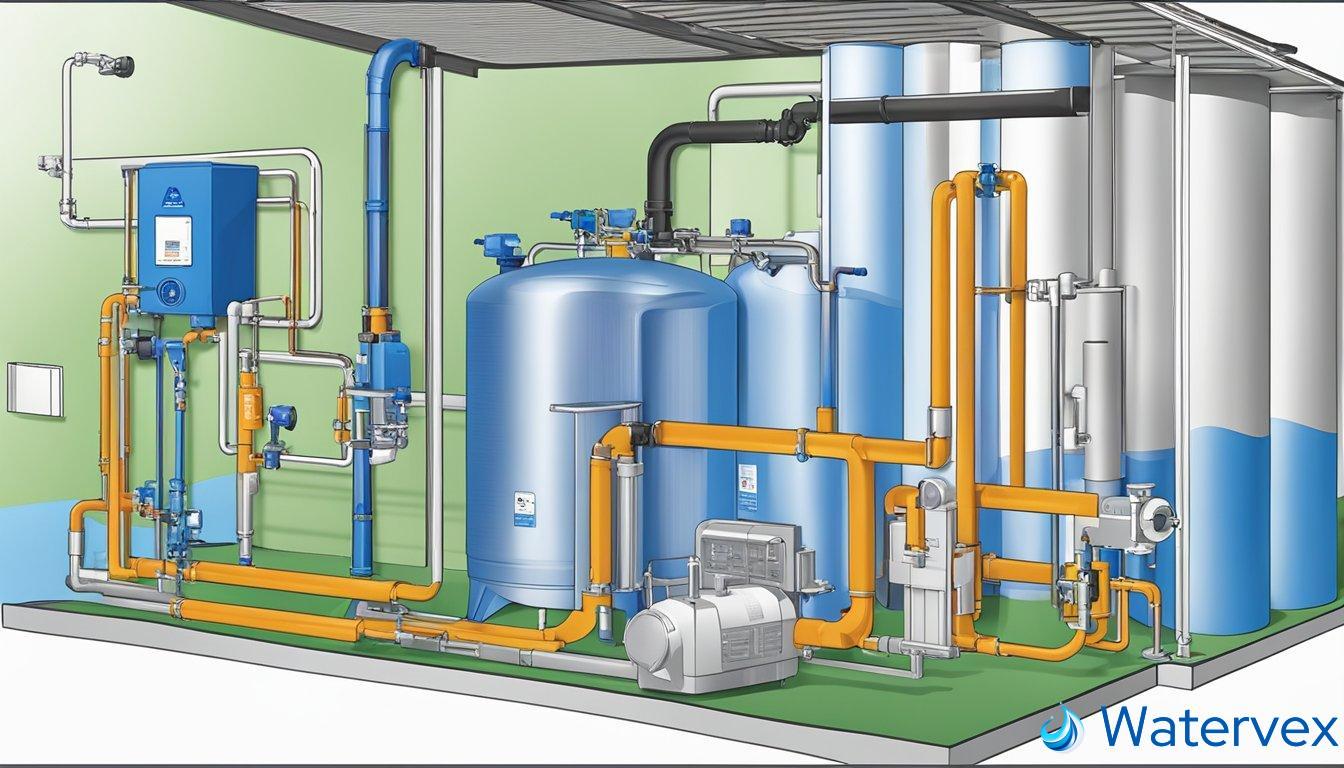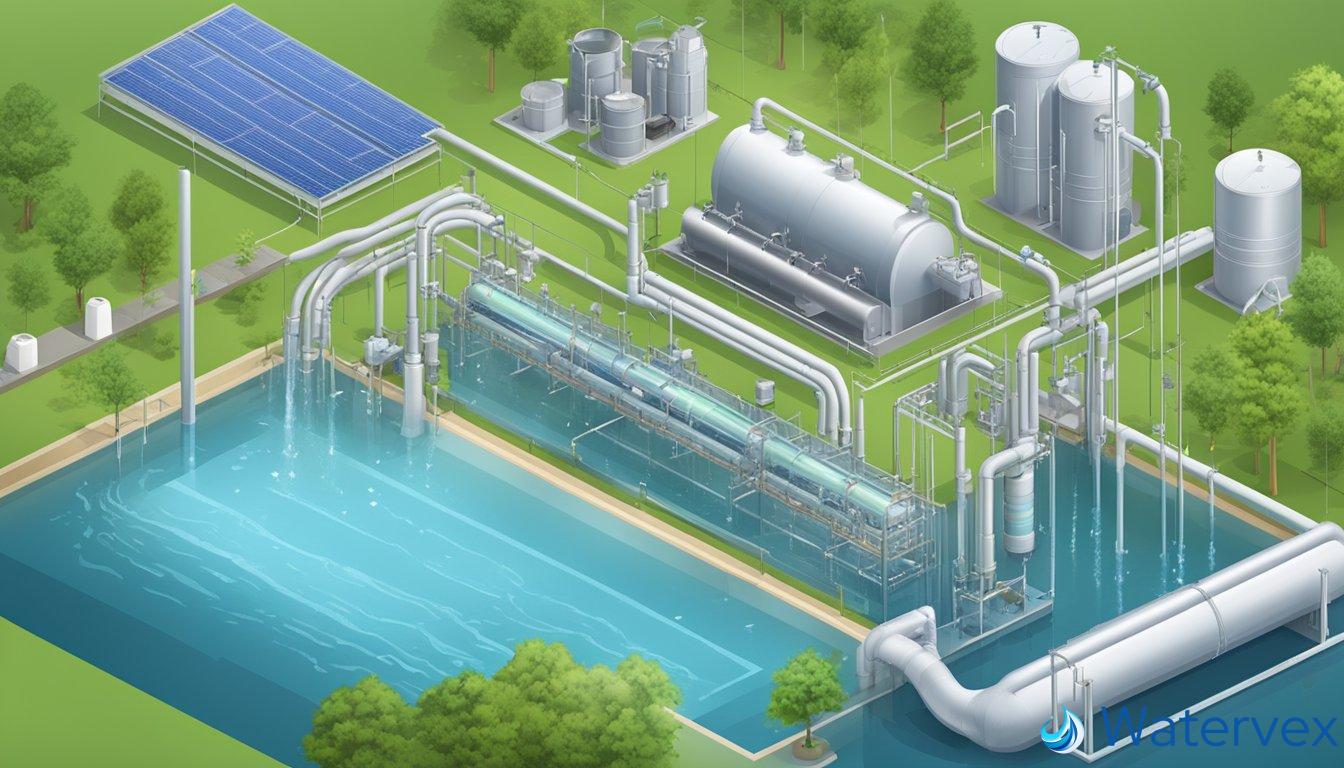Water quality is a significant concern for many households, and this is where the integration of water conditioner plants comes into play. By using these systems, you can enhance the quality of your tap water, making it safer and more pleasant for everyday use. Water conditioners address issues such as hard water, which is known for causing mineral buildup in appliances and can affect everything from your skin to the lifespan of your plumbing. What’s more, some of these systems are designed to be plant-friendly, allowing your houseplants to thrive with filtered water that is free from excessive minerals.

Understanding the types of water conditioner systems is crucial when making a decision for your home. Reverse osmosis units, for instance, can remove a broad spectrum of contaminants, providing purified water that’s excellent for both drinking and watering sensitive plants. However, not all filtration systems are created equal; some may just soften the water by replacing minerals like calcium and magnesium with sodium, which isn’t always ideal for plant health. When choosing a system, consider the balance between soft water benefits and your plants’ needs.
Maintenance and seasonal considerations are also part of the package when opting for a water conditioning system. It’s not just a matter of installing a system; to ensure optimal performance and longevity, regular upkeep is required. This may involve changing filters or cleaning components, and must be considered as part of your home maintenance routine. By proactively attending to your system, you’ll maintain water quality and protect both your household and your plants from any potential negative effects of poorly conditioned water.
Key Takeaways
- Enhances tap water quality, making it suitable for consumption and plant care.
- Offers a spectrum of solutions, from softening to complete purification with reverse osmosis.
- Requires maintenance for optimal performance and water quality consistency.
What Are Water Conditioner Plants?
Water conditioner plants are not your typical garden plants. Instead, the term refers to a solution for a common dilemma you may face in your garden—how to ensure that the water you’re using is of the right quality for watering your plants. Think of them as a built-in filtration system, but for your garden’s irrigation needs.
When you use tap water for your garden, it may contain minerals like calcium and magnesium, which over time can impact the soil structure and its ability to hold nutrients. Rainwater, while often touted as a preferred source for watering plants, isn’t always readily available and can still contain contaminants depending on your location.
By integrating water conditioners into your gardening routine, you neutralize unwanted elements in the water, balancing the pH level and mitigating the concentration of minerals that can lead to soil buildup. This is vital because a stable pH level is crucial for the absorption of nutrients in plants. Plus, conditioned water can help in dissolving nutrient build-ups in the soil, allowing your plants to flourish.
Here’s a quick glance at the benefits:
- Neutralizes pH levels
- Reduces mineral buildup
- Promotes efficient nutrient uptake
Groundwater, another commonplace resource for watering, can vary drastically in quality. Ensuring you have the right water conditioning process in place can protect your plants from hard water’s adverse effects, such as scale buildup on leaves.
By focusing on the appropriate conditioning of water, you’re tailoring the life source of your plants – water – to be as beneficial as possible. Remember, the goal is to mimic the best natural conditions, and conditioned water can be seen as a step towards that ideal environment for your garden.
How Do Water Conditioner Systems Improve Home Water Quality?

Water conditioner systems play a pivotal role in enhancing the quality of water within your home. They tackle issues related to hard water, unbalanced mineral content, and presence of harmful chemicals and bacteria.
Understanding the Process
To grasp the effectiveness of water conditioners, it’s critical to understand their function. These systems use various technologies to alter the physical properties of minerals like calcium and magnesium, which are primarily responsible for hard water. Instead of removing these minerals as softeners do through ion exchange, water conditioners change their form so they no longer cause scale buildup. Some advanced systems may integrate processes to dechlorinate and reduce concentrations of other undesirable elements like lead or copper.
Benefits for Household Use
For your household, the benefits of installing a water conditioner are substantial. You’ll notice a decrease in the limescale on your appliances, which translates to extended lifespan and improved efficiency, particularly with hot water heaters. Your skin and hair might feel softer after a shower, as softened water is gentler, reducing dryness. Moreover, if your municipality adds chlorine as a disinfectant, a water conditioner with activated carbon can significantly improve the taste and smell by neutralizing the chlorine without stripping away essential minerals.
Impact on Plants and Gardening
Your home’s water quality directly influences the health of your lawn and indoor plants. Hard water can deposit excess minerals into the soil, which might hinder plant growth. Conditioned water ensures a balanced mineral profile, which is more conducive to your plants’ nutritional needs. Also, if you utilize techniques like reverse osmosis water for delicate plant species, conditioned water can offer a balanced alternative, free from the side effects of excess sodium typically introduced by water softening systems.
What Should You Consider When Choosing a Water Conditioning System?

When you’re in the market for a water conditioning system, diving into the specifics will ensure you make an informed choice that caters to your unique household needs.
Assessing Your Household Needs
Before selecting a water conditioning system, understanding your household’s water consumption is crucial. Determine the average gallons of water your home uses daily; this will directly impact the size and type of system you’ll need. If your household relies heavily on distilled water for drinking or plant needs, opting for a system that ensures mineral balance might be beneficial.
Comparing Different Types of Conditioners
Water conditioners come in various types, including those that use salt or potassium. Some systems may substitute salt with a process like template-assisted crystallization (TAC), which alters the properties of minerals to prevent scaling. Another option, a reverse osmosis system, removes contaminants but also strips water of beneficial minerals. It’s essential to compare these systems, considering their impact on both health and your home’s infrastructure.
Installation and Maintenance
Consider the installation process—will you need professional help, or is it a DIY-friendly unit? Ongoing maintenance is another key factor; systems requiring frequent salt replacement may have higher long-term costs compared to those that operate without salt, which can lead to a lack of minerals if not managed properly. Regular maintenance checks will ensure that your system performs optimally and continues to meet your household’s water quality needs.
Seasonal Considerations and Maintenance Tips

Winter brings unique challenges for your garden. To protect your water conditioner plants from the cold, mulching is essential. Not just any mulch will do; choose straw or shredded bark, which won’t compact heavily. Compacted mulch can restrict airflow, something your plants desperately need during the cooler months.
When it comes to watering, a moisture meter is your best friend. During winter, the risk of overwatering increases, as plants use less water. With a moisture meter, you eliminate guesswork. Insert the probe into the soil; if the reading is high, skip watering. This little device can save your garden from root rot and other water-related issues.
Spring is a time for growth. As temperatures rise, so does the watering frequency. However, don’t solely rely on the weather; use the moisture meter to check soil conditions.
Meanwhile, subscribe to a gardening know-how newsletter for region-specific advice. This will keep you updated on local weather patterns and gardening tips tailored to your area.
Here’s a quick seasonal checklist:
Winter:
- Mulch around plants
- Use a moisture meter before watering
- Protect from frost
Spring and Summer:
- Increase watering as temperatures rise
- Check moisture levels regularly
- Subscribe to a gardening newsletter for tips
Fall:
- Prepare plants for dormancy
- Reduce watering gradually
- Clean up fallen leaves and debris to prevent disease
By following these steps, you’re ensuring your water conditioner plants stay healthy year-round. Always pay attention to your plants’ responses—they’ll tell you what they need!

